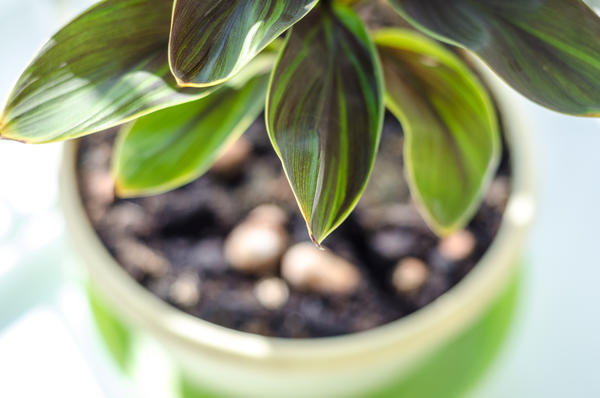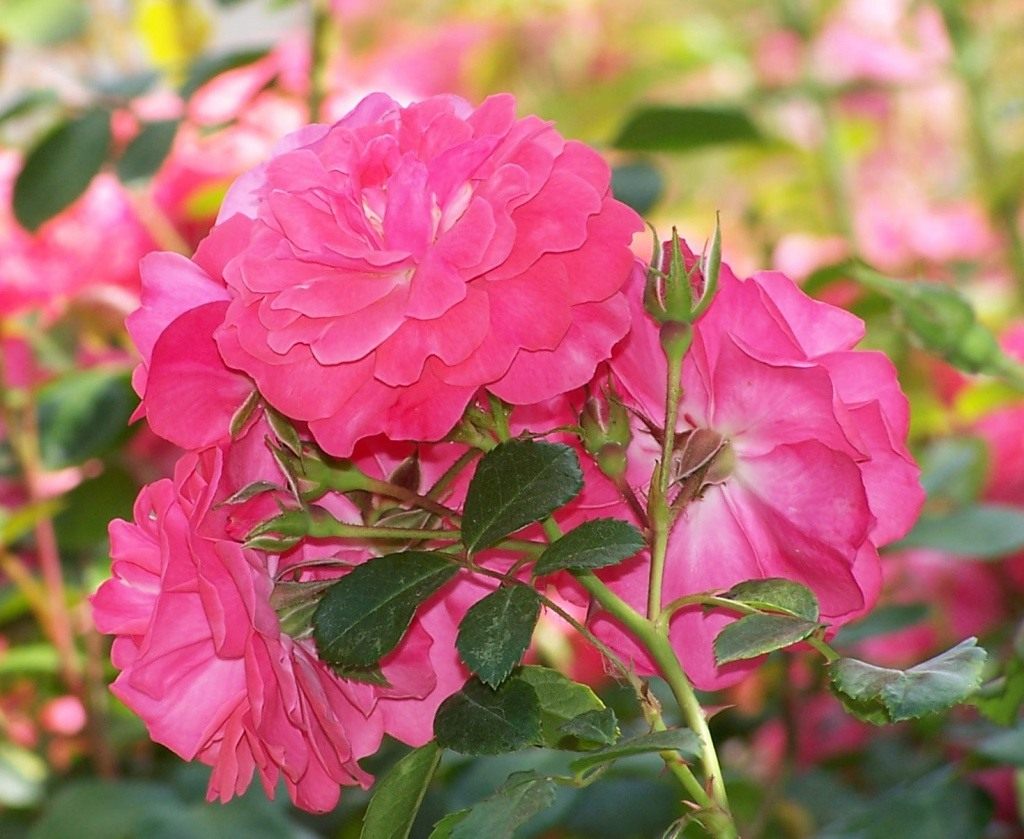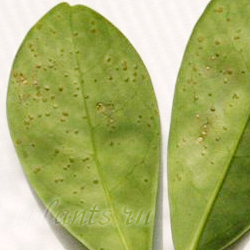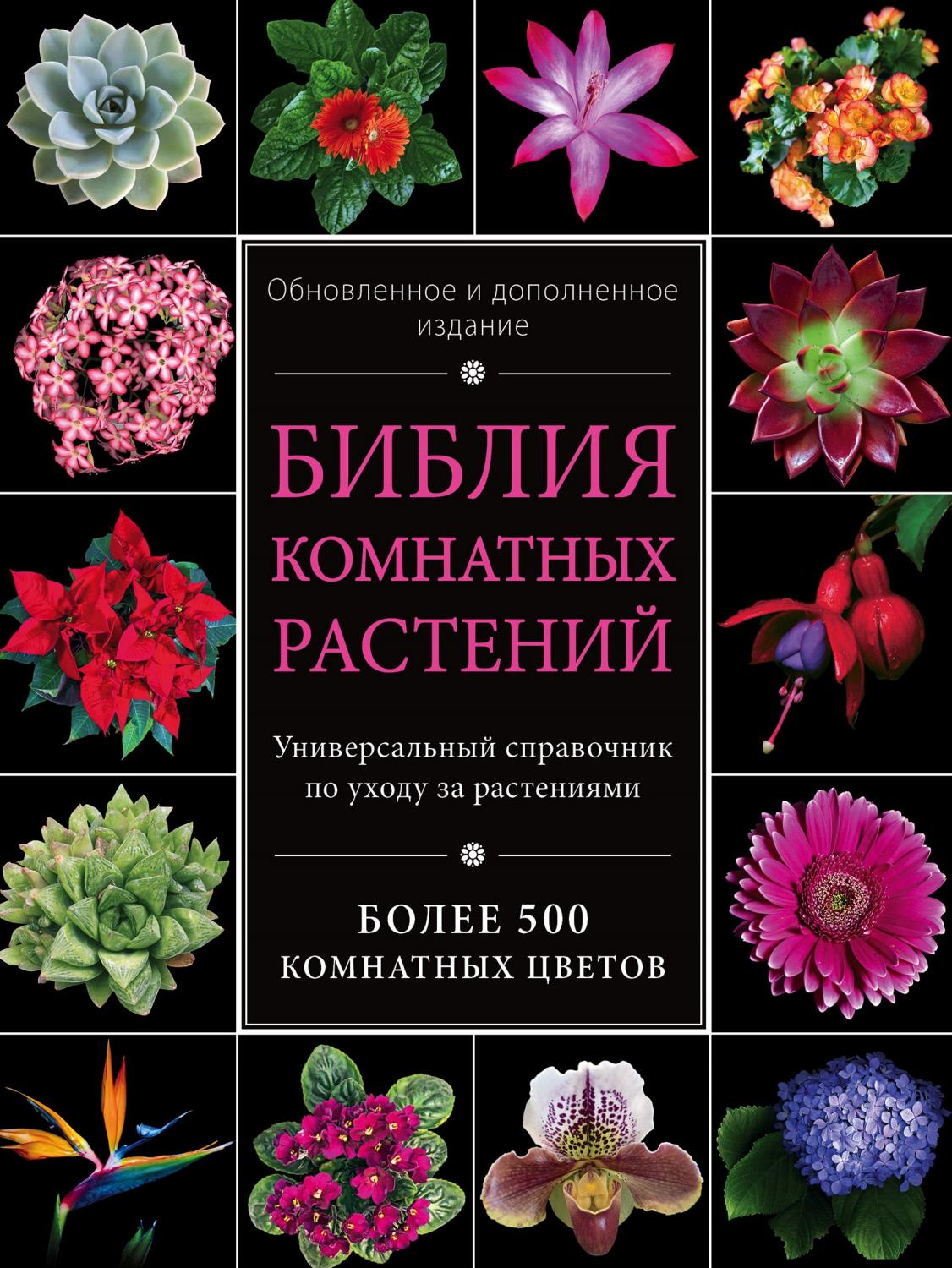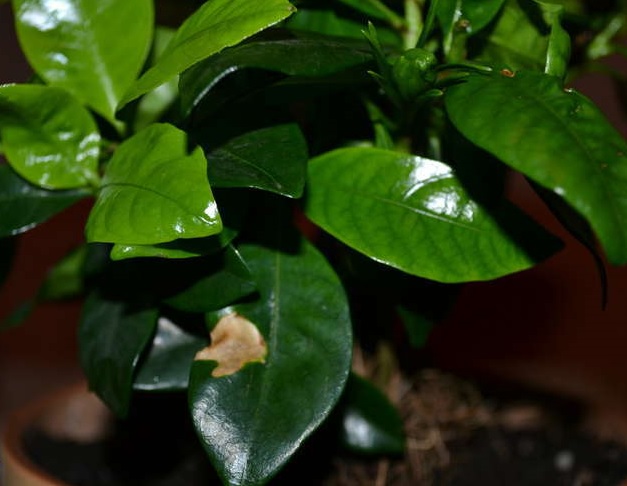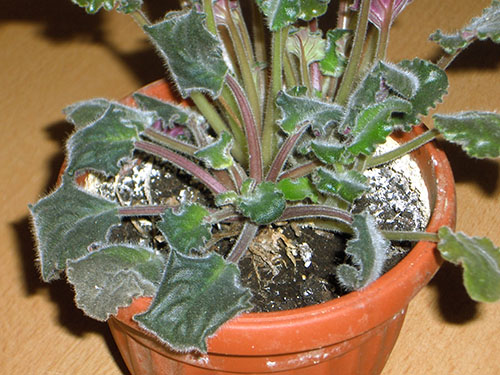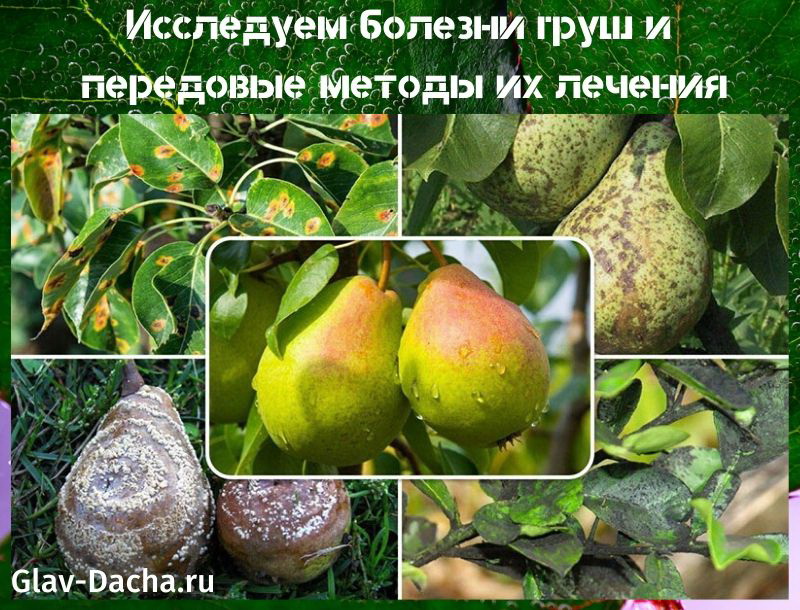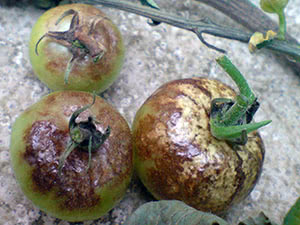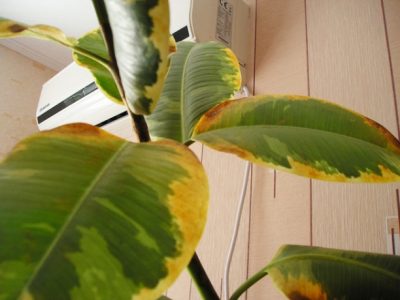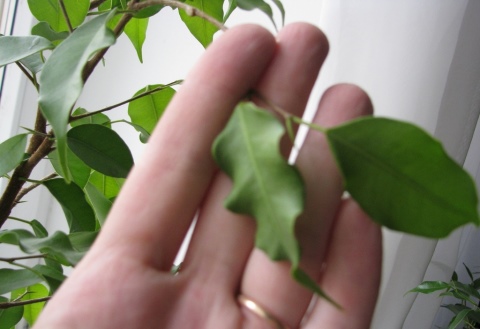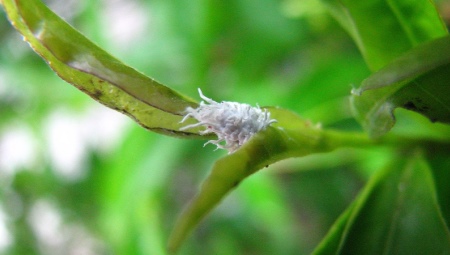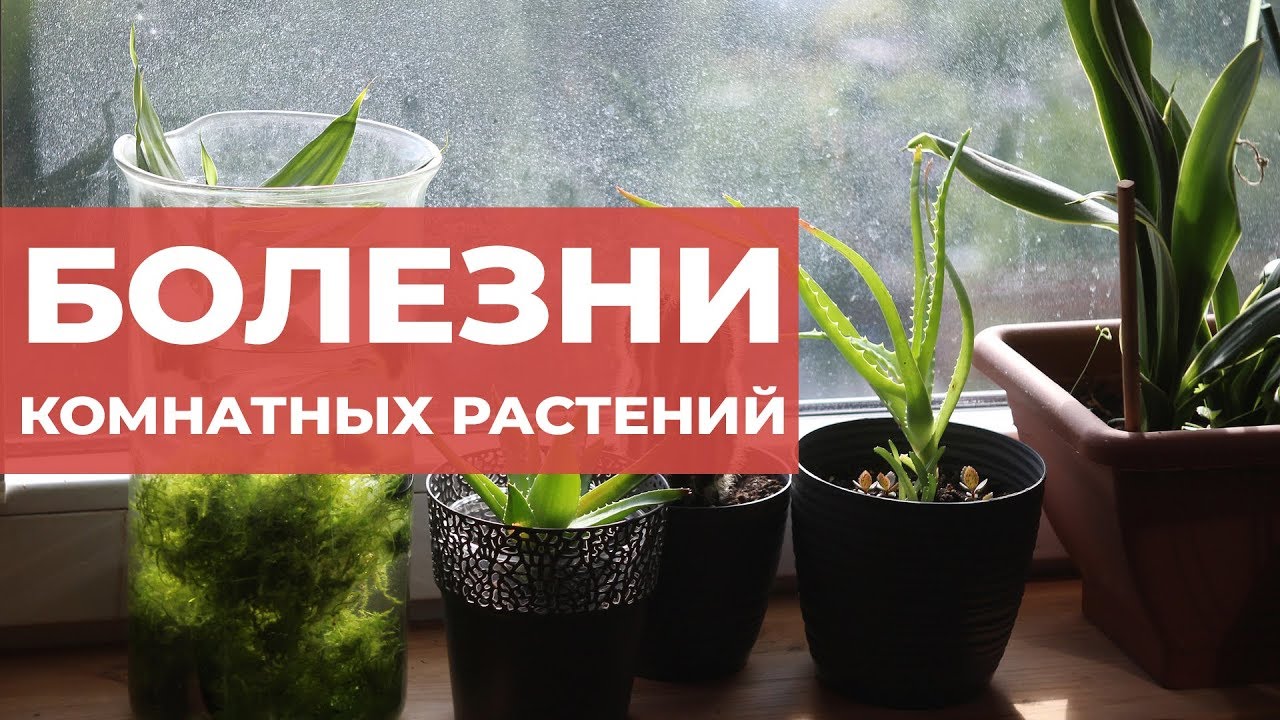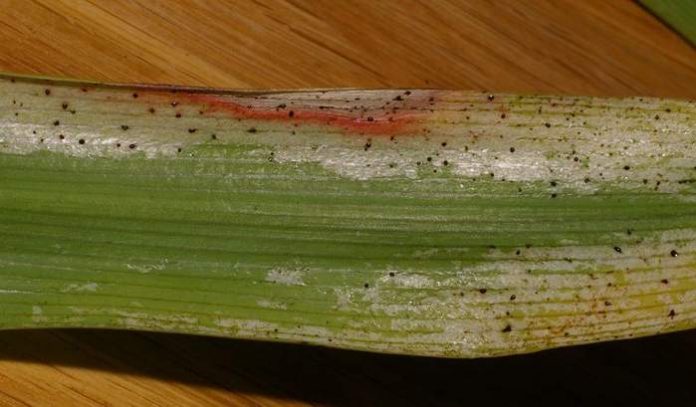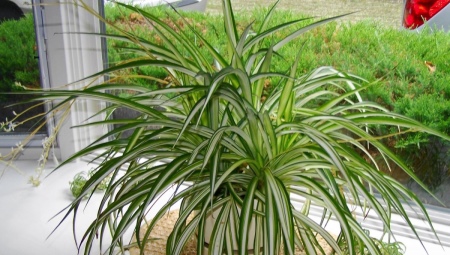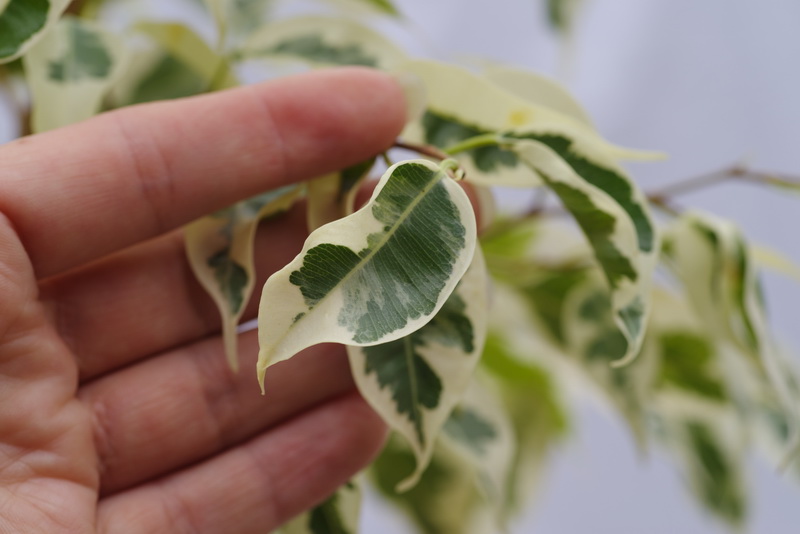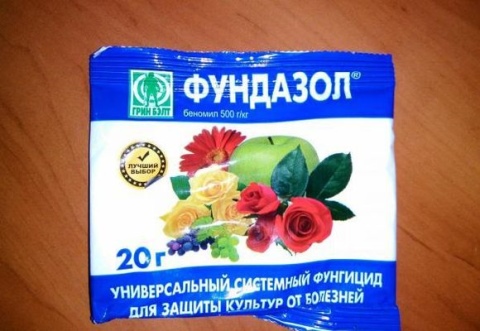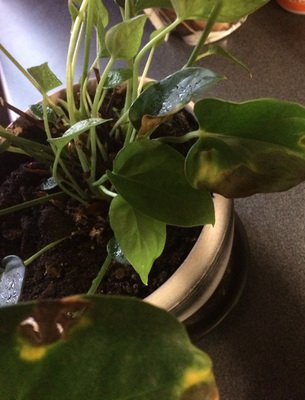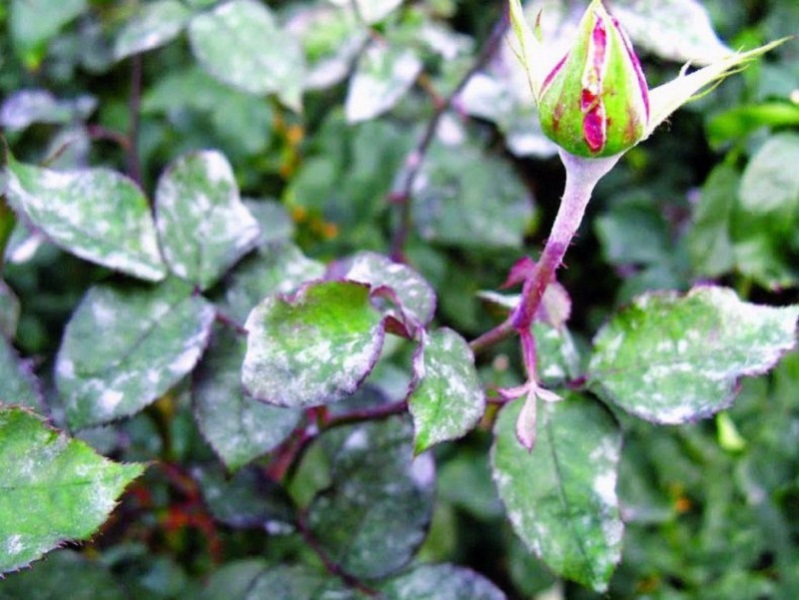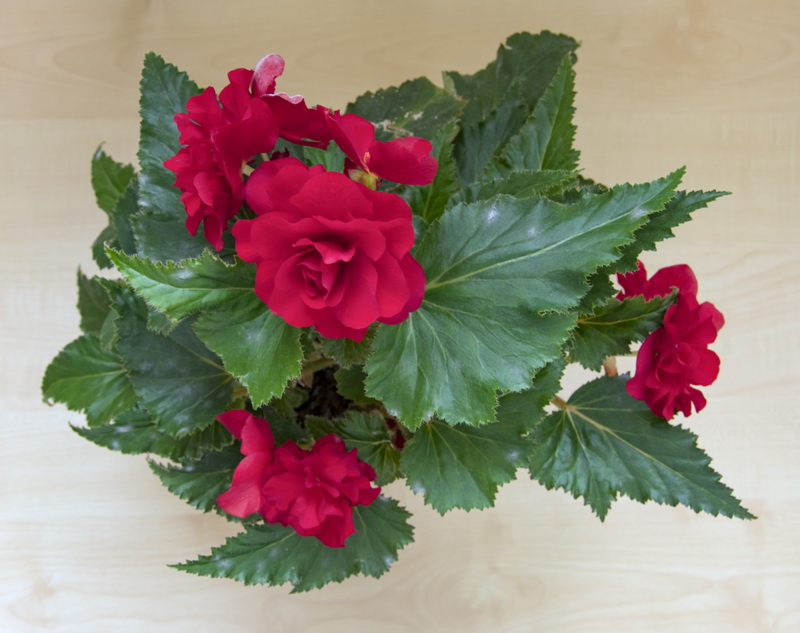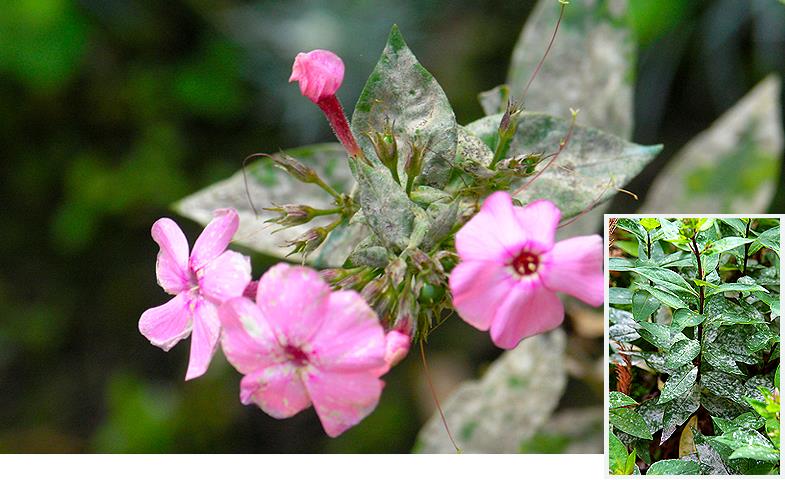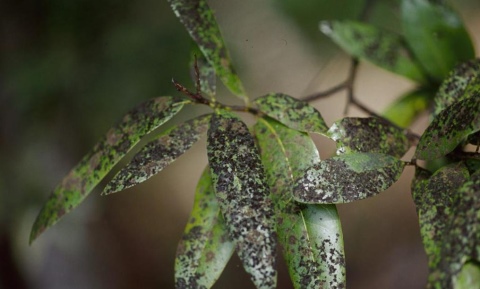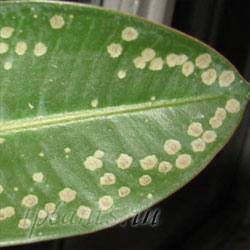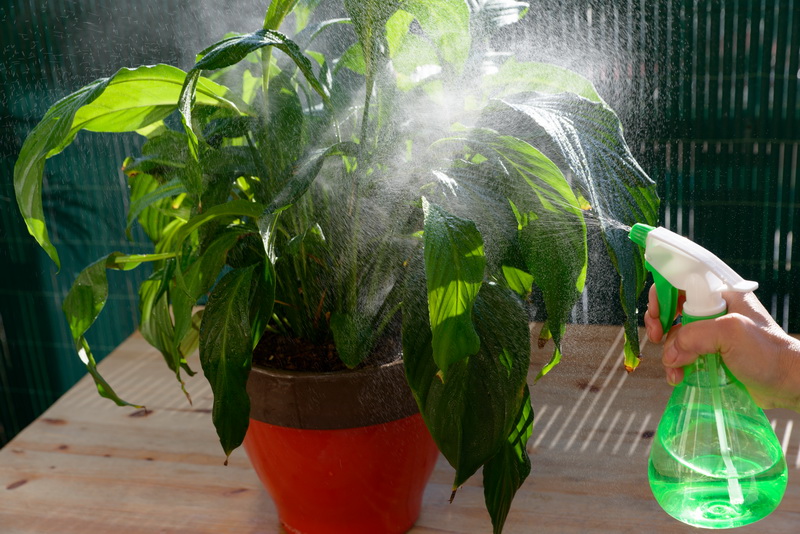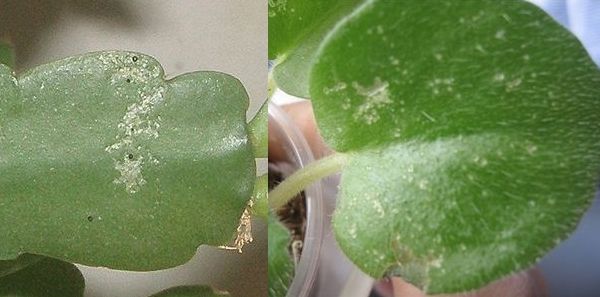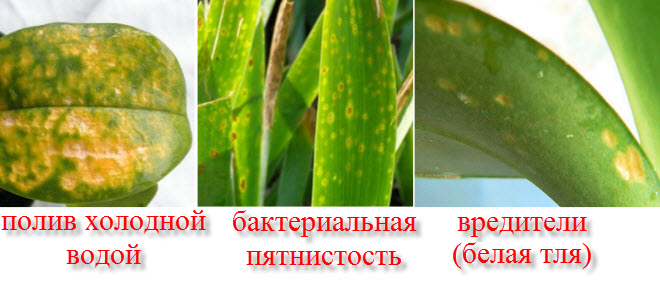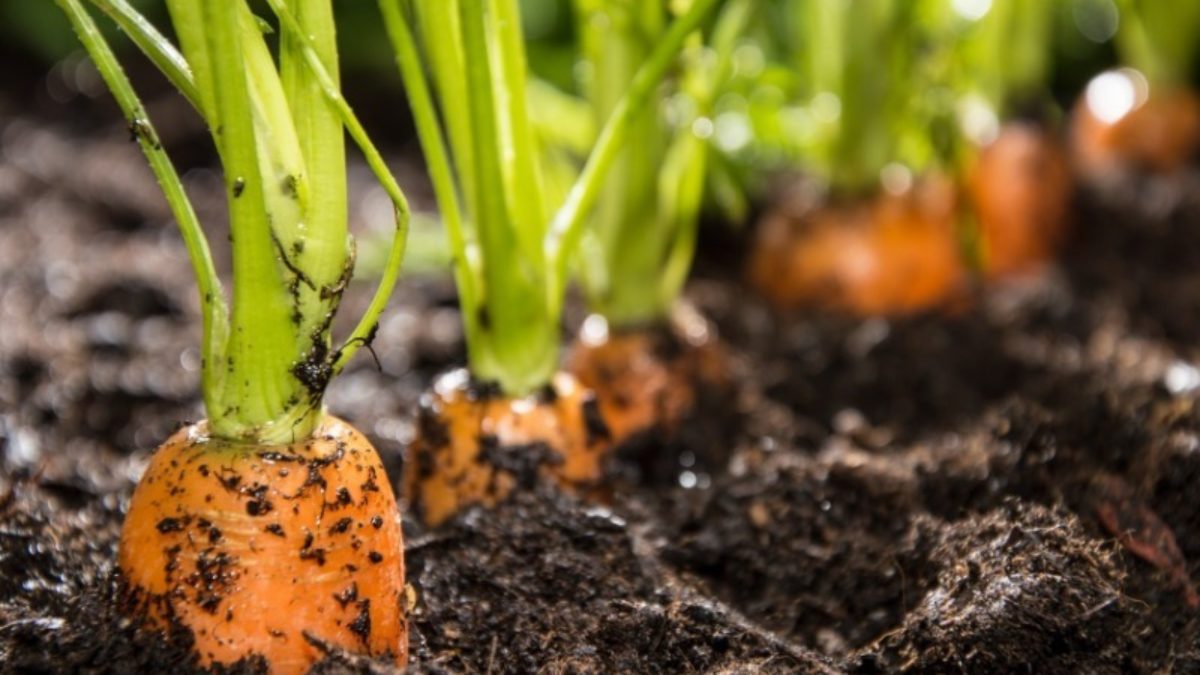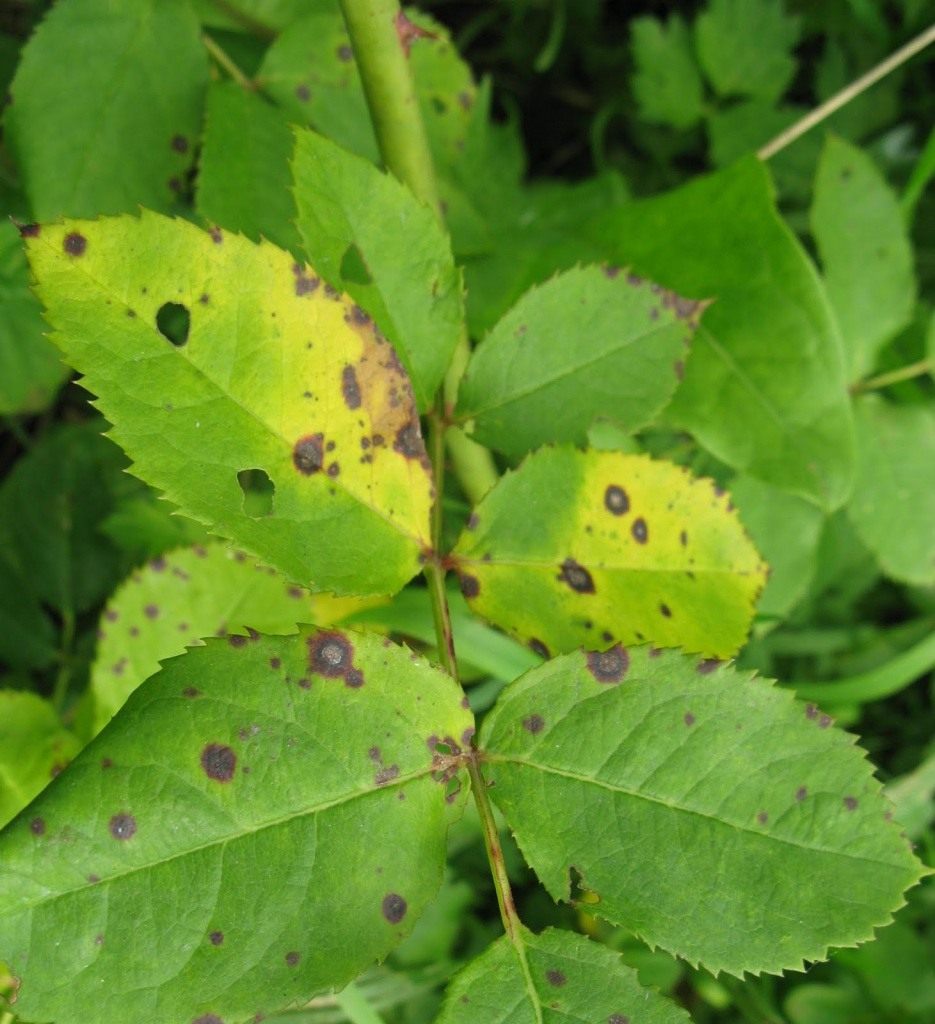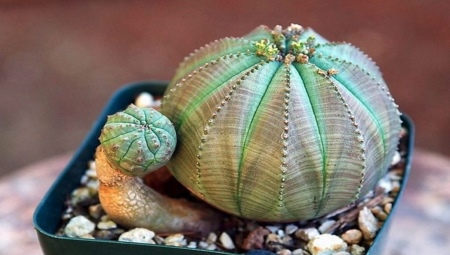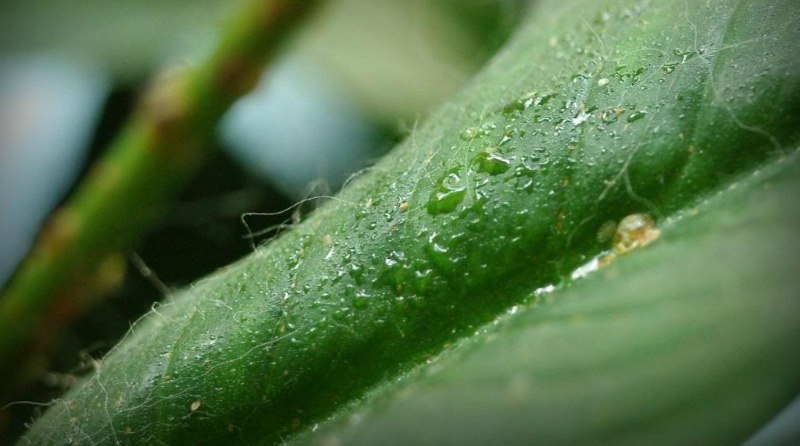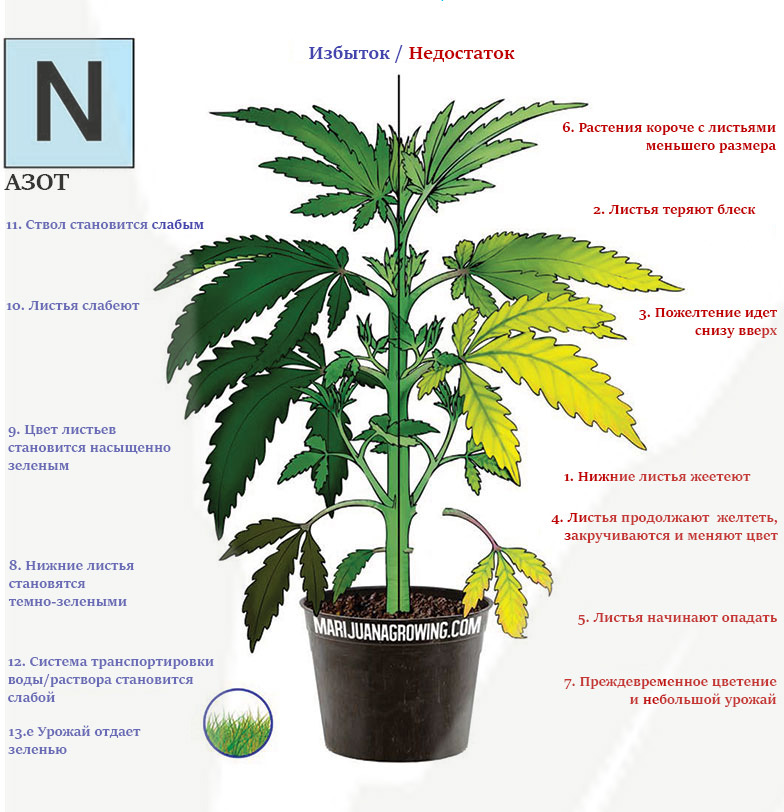The reasons for the development of diseases
Indoor houseplants of different varieties, as a rule, get sick due to the influence of the same factors.
It is extremely important to monitor the acidity of the soil, as well as the amount of nutrients in the soil, as their excess and deficiency can be harmful. For example, almost always with a low content of useful elements, the growth of the culture slows down, the leaf plates fall off and the appearance of flowers deteriorates.
An equally significant factor is the temperature in the room where the plant is located. Both too high and too low degrees provoke curling of the leaves.
With improper lighting, the condition of all parts of the shrub may deteriorate: the stems become thinner, the leaves dry up, and the flowers stop developing. Of course, watering is extremely important - excess moisture very often leads to rotting of the root system, while a lack of liquid explains why the leaves turn yellow. The reason for the deterioration of the condition of the green pet may also be the drugs used to kill insects.
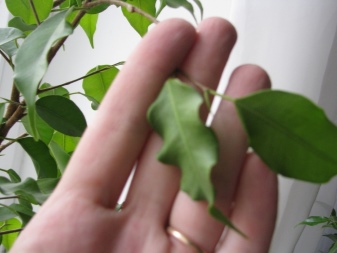

If we talk about powdery mildew, then it is often provoked by either improper or irregular irrigation, as a result of which the liquid remains on the leaf blades or accumulates near the roots. In addition, the increased temperature in the room, accompanied by excessive humidity, may be to blame. Typically, this situation occurs in the summer, but it is possible in the cold season, if temperature changes are observed in the apartment. Leaf plates dry out in many cases. This change can be caused by the use of hard water, improper irrigation, changes in the concentration of nutrients in the soil, exposure to direct sunlight, or even a container that is too tight for the roots.
Powdery mildew is caused by a simultaneous increase in temperature and humidity. In addition, improper care or an attack by pests may be the cause. Often it is a plant with weakened immunity from insects that becomes a "target" for a fungal disease.
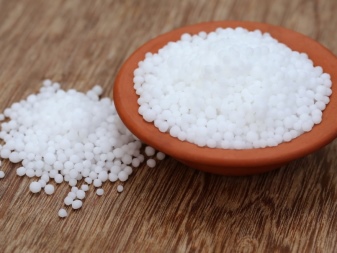

Causes of marigold disease
Marigolds are unpretentious plants. However, improper care of them provokes the development of various diseases.
Temperature violation
Due to a violation of the temperature regime, the following diseases can develop:
- powdery mildew (outside air is below 15 ° C);
- gray mold (cold, damp weather).
Note! The optimum temperature for the growth of marigolds in the open field is 18-26 ° С
Violation of watering rules
Violations of watering rules may cause the following problems:
- powdery mildew (the soil is constantly overdried and then poured over);
- black leg (darkening and rotting of the stems with excessive watering);
- cessation of growth (the soil is poorly moistened);
- small inflorescences (lack of moisture).
Excess moisture leads to the impossibility of the development of inflorescences after the marigolds bloom. They rot, which ultimately destroys the plant completely.
Lack of iron
If the plants or seedlings turn yellow, this could be a sign of iron deficiency. The problem can be easily solved if you add top dressing, which contains the missing trace element.
Preventive measures
Better than any treatment is timely and correct prevention. If the bush is healthy, it is unlikely to get sick, but if it does, the hydrangea will be resistant to illness.A weakened plant is very vulnerable to viruses, fungi or pests that can seriously harm it.
Disease prevention and protection from pests will be competent home care. For a healthy flower, it is necessary to correctly determine the place for planting it. Foliage and flowers wither quickly under the scorching sun. Therefore, hydrangea will grow optimally in partial shade conditions.
And also the plant needs sufficient watering.
Hydrangeas prefer moisture, so it is important to keep the soil from drying out. In the heat, you need to water the bush every other day.
It is also important to choose the right soil for planting hydrangea bushes. It will be difficult for a plant to survive in heavy alkaline soil.
It needs to grow in light, acidic soil. It is such a soil that "breathes" well and allows moisture to pass through.

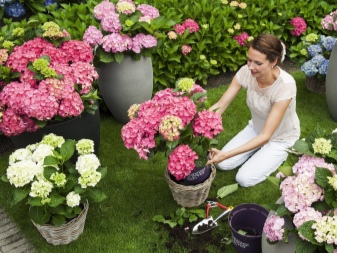
Providing correct and timely feeding is also necessary for hydrangeas. For this, special ready-made nitrogenous fertilizers are useful. In the summer, phosphorus-potassium agents are used, and in the autumn season, phosphorus is mainly used.
Shrub wood also needs preventive treatment. In the spring, before the beginning of the growing season, it is recommended to irrigate the bushes with copper sulfate. As a replacement option - the use of "Topaz", "Iskra" and "Fitosporin" - the most modern effective drugs.
For even more information on hydrangea diseases and pests, see the next video.
On anthurium brown dry spots
If the anthurium is sick. Brown spots on the leaves
Many fans of indoor plants have anthurium in their home collection. It is prized for its extraordinarily beautiful flowers and broad, shiny leaves. The difficulty in caring for anthurium lies in the need to create and maintain optimal conditions under which the plant will thrive and not be affected by pests and diseases.
Sometimes growers begin to notice how brown dry spots appear on the anthurium, which spoils the appearance of the flower. It should be noted that most diseases are associated with non-compliance with the rules for caring for the plant.
Features of anthurium care
Anthurium is a tropical plant, therefore, it requires special growing and care conditions. An important point is the correctly chosen place where the flower will stand, since it loves light, but direct sunlight is harmful to it. With constant exposure to this kind of lighting, the leaves begin to curl up into a tube.
Drafts are also detrimental to the flower. The optimum temperature that is considered comfortable for the plant is between 20 and 25 degrees Celsius. In addition, the soil must be at the same temperature as the air in the room.
Daily spraying of anthurium is recommended, as it prefers high humidity. In this case, you need to try so that water does not fall on the flowers themselves, otherwise stains may appear on them, which will affect their decorative effect.
Water the plant sparingly, making sure that the earthy clod does not dry out, but remains slightly damp. Water for irrigation is used warm and well-separated, its stagnation is not allowed.
Causes of the appearance of spots on the leaves of a plant
Since the plant is afraid of drafts, the result of being in such conditions will be the appearance of large brown spots. You need to rearrange the flower in a warm place, and reduce watering to stop their development.
If the diameter of the spots is not large, then most likely this is a consequence of sunburn. Anthurium should be rearranged in partial shade, where it will be much more comfortable.
If the leaf plates of anthurium are completely covered with brown dry spots, and the size of the new growing leaves is much larger than the previous ones, then the reason lies in the excessive amount of fertilizers used to feed the plant.
Sometimes mealybugs attack the plant. For their life, the aerial parts of the flower are an excellent environment.This also leads to the appearance of brown dry spots on the anthurium. If you do not take any pest control measures for a long time, then leaves may fall. A good remedy for mealybugs is treatment with karbofos.
Yellowing and dying off of old anthurium leaves located at the bottom of the plant is a natural process. Sometimes adult plants can lose their attractiveness because of this, so flower growers practice rejuvenating the flower.
Anthurium fungal diseases
The most common fungal disease of anthurium is septoria. With it, the leaf plate becomes covered with brown spots, along the edges of which a border of light color is noticeable, and inside there are dark dots.
In this case, the concentration of substances should be weak.
In order for the anthurium to bloom abundantly, and the leaves are shiny and clean without any spots, you need to be careful about feeding the plant. Fertilizers are applied no more than once every fourteen days.
Any universal fertilizer is suitable for feeding.
The only thing that should be paid attention to is the anthurium flowering period, here the priority should be special mixtures for decorative flowering plants, such as Agricola, Fertika-Lux, Pocon and others. Particular attention should be paid to the dosage of dressings, their concentration should be halved from that recommended on the package with the drug
Particular attention should be paid to the dosage of dressings, their concentration should be reduced by half from that recommended on the package with the drug. Please rate the material you have read :)
Please rate the material you have read :)
(7 rated, rating: 5.86 out of 10) Loading ...
Reasons for the appearance on indoor plants with a photo
The appearance of plaque on the leaves is due to infection by fungi and insects. The source can be identified by such characteristics of the spots as:
- the form;
- Colour;
- texture.
Correct identification of the pathogen is an opportunity to take timely measures to save the indoor flower.

Important! At the first suspicion of infection, regardless of its nature, the flower must be isolated from the rest. Some pathogens instantly spread to neighboring plants.
Powdery mildew
The disease is caused by microscopic fungi of the genus Sphaerotheca pannosa. They multiply rapidly on the outer surface of the leaves.
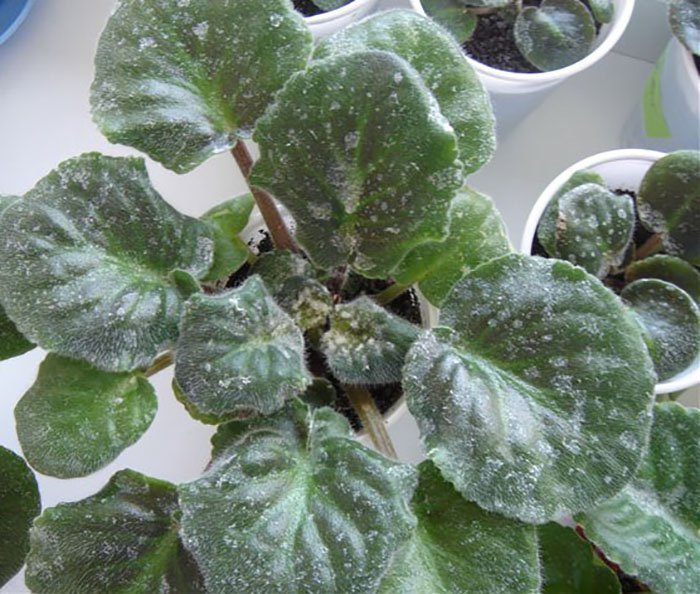
Symptoms:
- white bloom in the form of spots, as if the leaf plates were sprinkled with flour;
- rapid spread of the disease throughout the plant and to neighboring flowers;
- weakness of plaque fixing - if you run your fingers over it, it is easily erased.
The development of the disease can be triggered by an excess of nitrogen in the dressing, increased temperature and humidity in the room.
Downy mildew manifests itself with similar symptoms. However, the fungus grows on the inside of the leaf plate. The spots can be yellowish, whitish or purple.
Mold and mildew
Mold is a fungus that begins to develop due to constant waterlogging of the substrate and frequent spraying. When infected on the plates, observe:
- fibrous or fleecy plates;
- plaque resembling a layer of gray dust;
- putrefaction, progressing as the disease progresses.
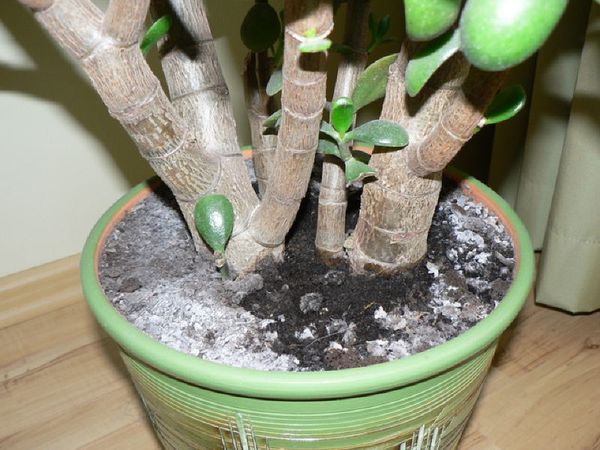
If left untreated, the fungus spreads quickly.
Important! Mold isn't just dangerous for plants. It is harmful to human health, therefore, when infected, the flower must be removed from the living room.
Gray rot
Another dangerous fungal disease of flora representatives. The causative agent affects:
- leaves;
- stems;
- petioles.
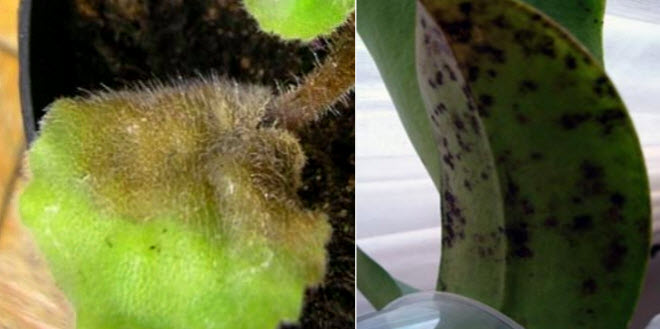
First, a fluffy gray coating appears, which very quickly leads to decay of leaves and stems. Treatment is effective only at the initial stage. If more than half of the green mass is affected, the plant will have to be destroyed.
Plaque of brown and black
The appearance of brown and black spots on palm, citrus, camellias and azaleas causes a black sooty fungus. Its signs:
- damage to the upper and lower parts of the sheet;
- a plaque that looks like a dark powder;
- thin black film.
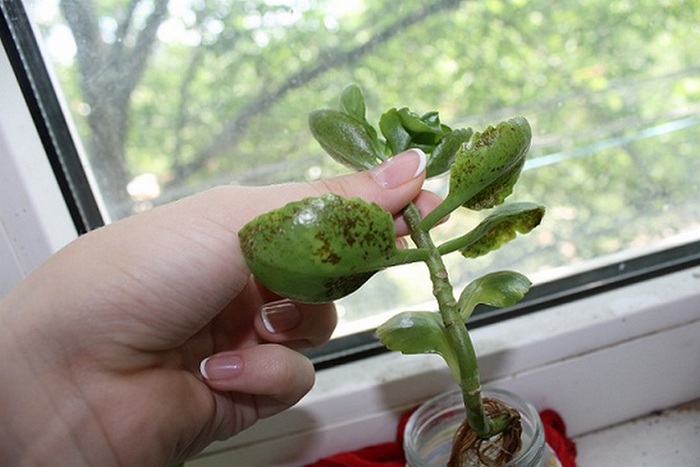
The disease is associated with lesions of scale insects, thrips and aphids. The fungus develops on a plate covered with plant sap, which is released from punctures left by insects. The sooty mushroom itself is not particularly dangerous. But you have to fight it. Plaque prevents access to sunlight, "seals" the stomata on the leaves through which plants breathe.
Rusty stains
Yellow, orange, brown spots on the lower surface of the leaf plate are a sign of a dangerous fungal disease called rust. If you run your finger over the coating, powder will sprinkle. These are fungal spores.
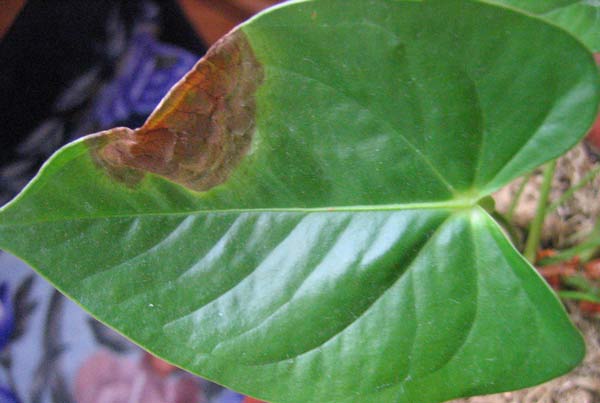
Consequences of infection:
- deterioration in photosynthesis;
- loss of moisture;
- metabolic disease.
Without timely treatment, the fungus infects all parts of the plant. It dies.
Pests
The appearance of some insects leads to plaque on the leaves. Most often these are:
- mealybug is clearly visible to the naked eye. Looks like small lice visible on normal inspection. When infested by this pest, wax spots appear, similar to cotton wool lumps. The plaque is removed with a disc dipped in alcohol;
- aphids, thrips, scale insects are small insects that pierce leaf plates. This results in translucent shiny spots or streaks. Aphids and scale insects can be seen. Thrips are identified by characteristic strokes, similar to the strokes that the larvae leave;
- whiteflies are small white flies. They leave eggs, larvae and their empty skins on the bottom of the plate.

When insect infestation is detected, special preparations are used - insecticides. Many flower growers use Aktara. It is an effective pest control agent. They are sprayed with plants and water the soil. Aktara is absorbed by the roots and leaves, and then circulates through the plant cells for several days without affecting its vital activity. It enters the body of pests while feeding on flower juice.
Important! Insects themselves harm plants. Weaken their growth and can lead to death
But that is not all. They carry dangerous fungi and viruses, so you need to take timely measures to destroy them, to act immediately after identifying the pest.
3 Therapeutic spraying and watering
When treating plants, the following steps should be taken:
- 1. Tear off all yellowed leaves, branches, flower stalks of the plant, devoid of turgor. Branched ornamental crops must be carefully pruned. The extracted parts of the plant are necessarily burned or removed from the site, as they pose a danger to all healthy crops. Diseased plants should not be thrown into the compost pit, since fungal spores persist and over time can provoke a new outbreak of the disease.
- 2. Replace the top layer of soil in the garden bed and in pots, as colonies of fungal mycelium are hiding there.
- 3. Water or spray contaminated plants with chemicals or homemade folk remedies. Spray the soil and diseased specimens generously to moisten all areas of trees, bushes and flower crops. Garden tools are also processed.
3.1 Folk remedies
They are used as a prophylaxis or in the initial stages. With significant damage to plants, more aggressive methods of control are needed.
The following products are used for the preparation of funds:
- 1. Soda ash and laundry soap. Take 25 g of soda, dissolve in 5 liters of hot water and add 5 g of crushed soap. All components must be thoroughly mixed until a homogeneous mass is obtained. Spraying with this preparation is carried out 2-3 times with an interval of a week.
- 2. Baking soda and liquid soap. Dissolve 1 tbsp in 4 liters of water. l. soda, 0.5 tsp. soap. The irrigation scheme is the same as in point 1.
- 3. Potassium permanganate. In 10 liters of water, dilute 2-3 g of potassium permanganate.It is necessary to use the product 3-4 times with an interval of 5 days.
- 4. Serum. To prepare a solution, you need to take 1 liter of whey and add to 10 liters of water. The whey solution forms a film on the leaves and stems. At the same time, the mycelium does not breathe and dies. The plant, having received nutrients, is healed. All procedures must be performed either after rain or in dry weather 2-3 times every 3 days.
- 5. Decoction of horsetail. 100 g of fresh horsetail is poured with a liter of water and kept for a day. Then simmer over low heat for about an hour and a half. The filtered liquid is diluted with water in a ratio of 1: 5 and the bushes are sprayed. The concentrate is stored in a cool dark place for a week. Spraying is carried out regularly in spring and summer.
- 6. Copper sulfate combined with soap. It is recommended for use in the fall, after harvest. In a glass of hot water, dissolve 5 g of vitriol. In another dish, dissolve 50 g of laundry soap, better than 70%. Then a solution of vitriol is poured into it. The emulsion is used 1-2 times with an interval of 7-8 days.
- 7. Mustard solution. In 10 liters of water, you need to dilute 2 tbsp. l. mustard powder. Apply the cooled solution for spraying and watering.
- 8. Ash and soap solution. 1 kilogram of wood ash is stirred in water at room temperature. Insist for a week, stirring occasionally. Then the liquid without sediment is poured into another bucket, about 20-30 g of soap is added and used for disinfection. Spraying can be carried out every two days.
- 9. 1 kg of cow dung is mixed with 3 liters of water. They insist for three days. Then it is diluted with water in a ratio of 2: 3 and processing is carried out.
- 10. Garlic infusion. 25 g of crushed garlic is poured with a liter of water, insisted for no more than 24 hours. The filtered liquid is added to water in a ratio of 1: 5 and the affected cultures are treated.
3.2 Chemicals
Fungicides are more effective against many diseases. They act destructively on the fungus, stop the destruction processes at the cellular level, and protect the culture. A one-time application may be necessary, but if necessary, the procedure can be repeated 3-4 times.
The most effective drugs to help fight powdery mildew:
- Topaz.
- Fundazol.
- MC Acrobat.
- Previkur.
- Vitaros.
- Speed
- Extra Amistar.
- Fitosporin and others.
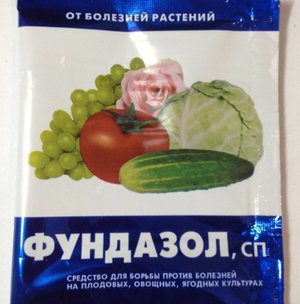
The latter drug is used as a prophylactic agent, since it is powerless against the powdery mildew that has arisen.
The video has been deleted.
| Video (click to play). |
Sources:
- Gagunova E. Ya. General care of the sick / E. Ya. Gagunova. - M .: Medicine, 2005 .-- 308 p.
- Sergienko, Yu. V. Complete encyclopedia. Houseplants. Care and cultivation. Reproduction. Accommodation in the interior / Yu.V. Sergienko. - M .: AST, 2008 .-- 320 p.
- Sergienko, Yu. V. Complete encyclopedia. Houseplants. Care and cultivation. Reproduction. Accommodation in the interior / Yu.V. Sergienko. - M .: AST, 2008 .-- 320 p.
- Treyvas, L. Yu. Atlas-determinant. Diseases and pests of ornamental garden plants / L.Yu. Treyvas. - M .: Fiton XXI, 2014 .-- 192 p.
- Stoppard, Miriam A book about the face and body. A practical guide to caring for your appearance / Miriam Stoppard. - M .: Panorama, 2013 .-- 256 p.
Powdery mildew control technique
The destructive powdery mildew on phlox, the control measures of which were carried out competently and purposefully, disappears for the entire growing season. At the first manifestations of infection, it is necessary:
- Cut off all affected leaves and branches.
Remove diseased elements of the plant from the garden and burn (this is the only way to eliminate the spores of the fungus and prevent it from moving to other crops).
Spray healthy plants with systemic fungicides or apply tinctures prepared according to folk recipes.
Chemicals are used strictly according to the instructions. The gardener must remember to protect the body. It is not recommended to exceed the dosage or increase the number of sprays. For processing, a 1% solution of colloidal sulfur, Topaz, Skor, Topsin, Fundazol is used.
Advice! Before using chemicals, it is recommended to try to cure the plant with folk remedies.
White bloom on phlox leaves, what to do in order not to use chemistry:
- Pour 150 g of wood ash into 1 liter of water. Insist for two days. Strain. Add 2 g of grated soap (household soap is better). Spray the plant 2 times at intervals of 14 days.
Mix 4 g of soda ash, 4 g of grated soap. Dissolve the ingredients in 1 liter of water. Spray the bushes twice at intervals of one week.
Mix 100 g of whey or kefir with 1 liter of water. Spray the plant in the evening.
Dissolve 1 liter of mullein in 10 liters of water. Spray the plant. Downy mildew on phlox will go away irrevocably, and the plant will receive the necessary dose of nutrients. It is necessary to spray after sunset.
Chop 50 g of garlic thoroughly, pour 2 liters of water, insist in a closed container at room temperature for 24 hours. Spray diseased bushes.
Mix any vegetation in equal amounts with hot water. Insist 5 days. Spray the plant affected by the fungus.
Pour 1 kg of fresh horsetail (50 g dry plant) with a bucket of water. Insist one night. Boil for half an hour. Strain. Use a solution in a ratio of 1: 5 (one part of the infusion to 5 parts of water).
Advice! Before treating phloxes from white plaque on the leaves, it is recommended to carry out mechanical cleaning. Folk remedies are used only at the onset of the infection.
After spraying, it is necessary to observe the bush. If the signs of fungal infection have not disappeared or the problem is aggravated, it is necessary to use special chemicals that are sold in garden centers.
In order not to worry about how to save phlox from powdery mildew, it is necessary to prevent the occurrence of a fungal infection. It is worth noting that "satisfied" flowers are less susceptible to disease, because their support forces are high.
Simple procedures will help you grow healthy phlox and enjoy abundant flowering.
Prevention of powdery mildew on phlox:
- Introduce nutrient compositions during the growing season. Both organics and mineral complexes are used.
In hot weather in the evening, spray young bushes with water with trace elements.
Remove dead plant parts in a timely manner. The fallen leaves must be removed from the garden and burned.
Sprinkle the trunks of flowers with wood ash. This procedure will not only avoid trouble, but also help fill the plant with useful components.
In the autumn, it is necessary to dig up the trunk circles. In the process of performing garden work, it is recommended to add copper-based preparations.
In the summer and autumn periods, the use of nitrogen-containing preparations should be abandoned. The active growth of shoots provokes the appearance of a fungus.
Do not thicken the plantings. The bush from the bush is planted at a distance of 0.5-1 m. This scheme will allow the sun to freely penetrate deep into the flowering caps.

